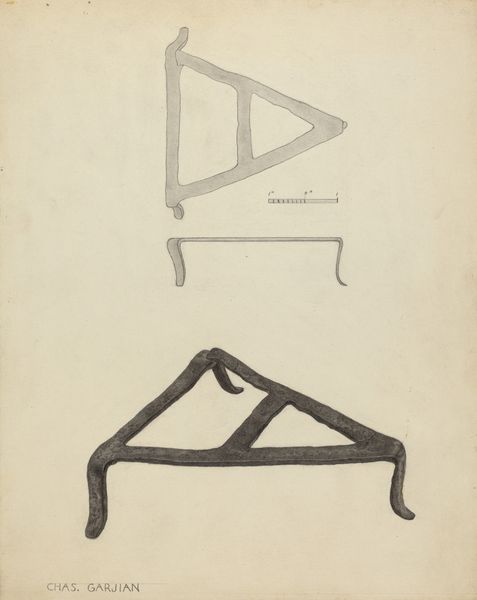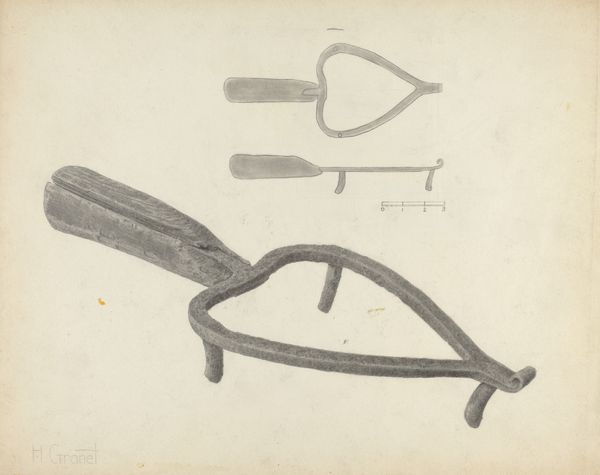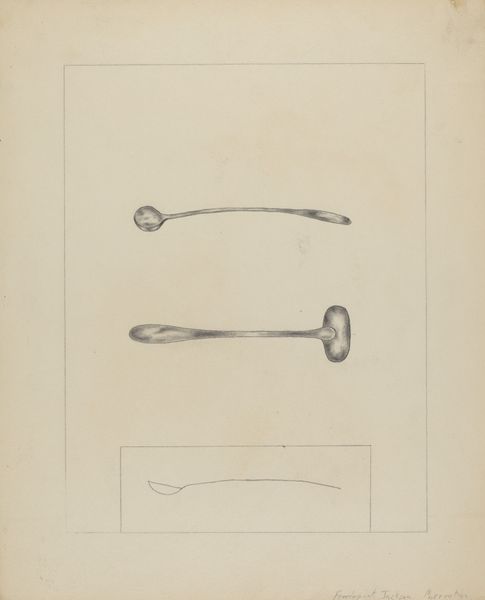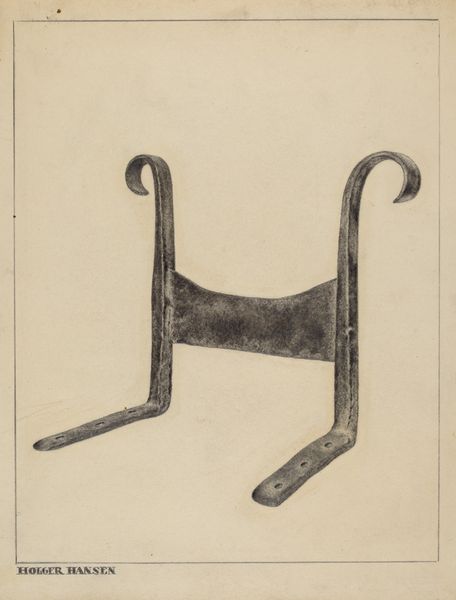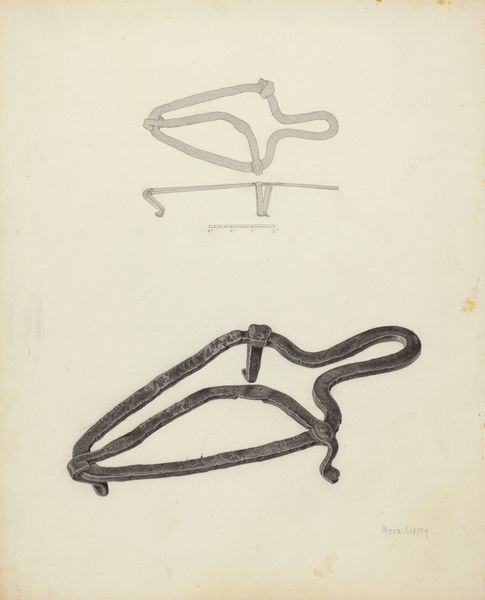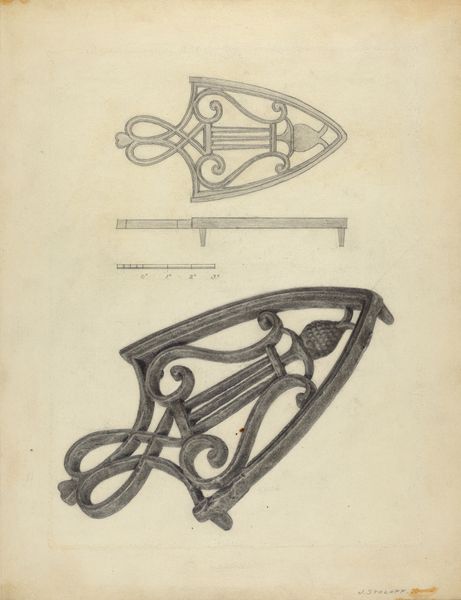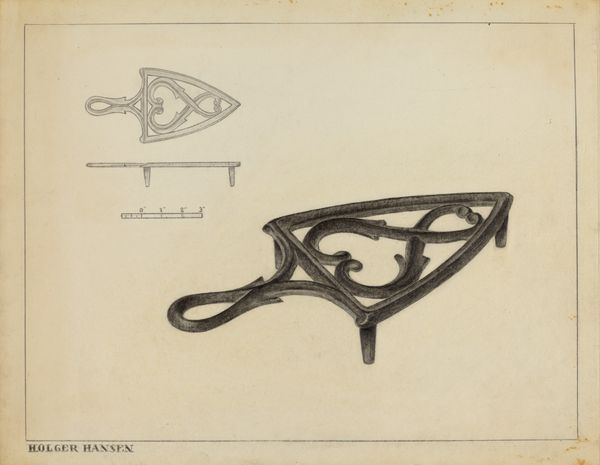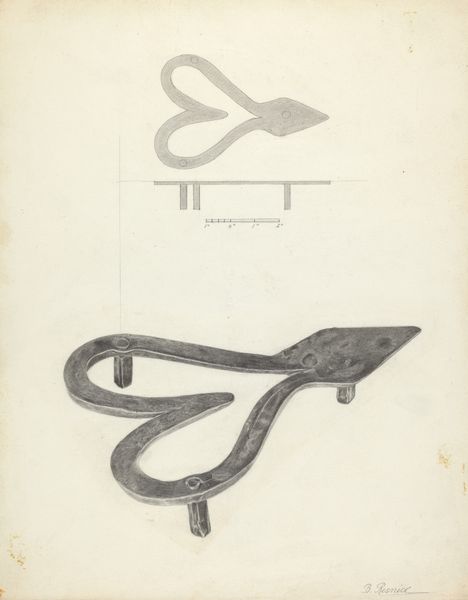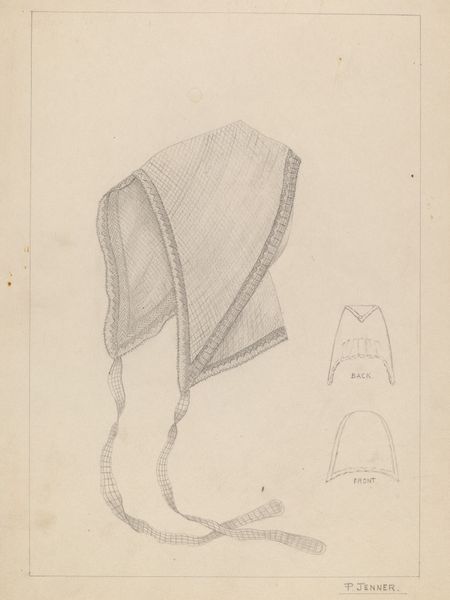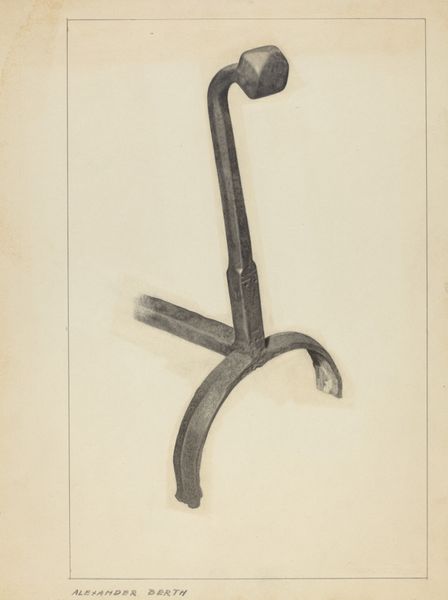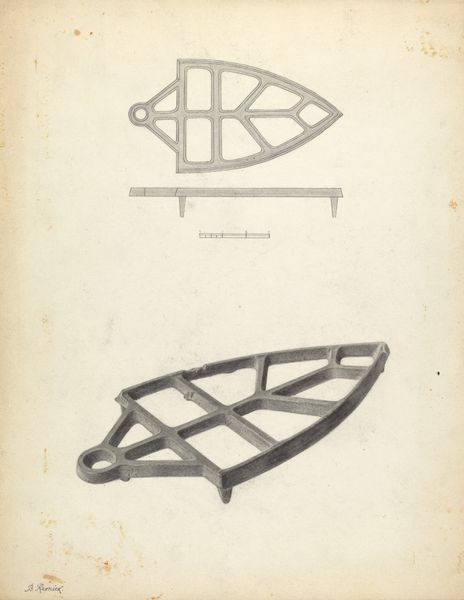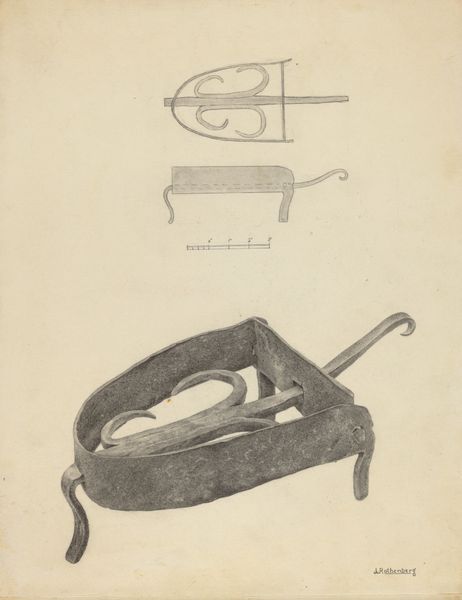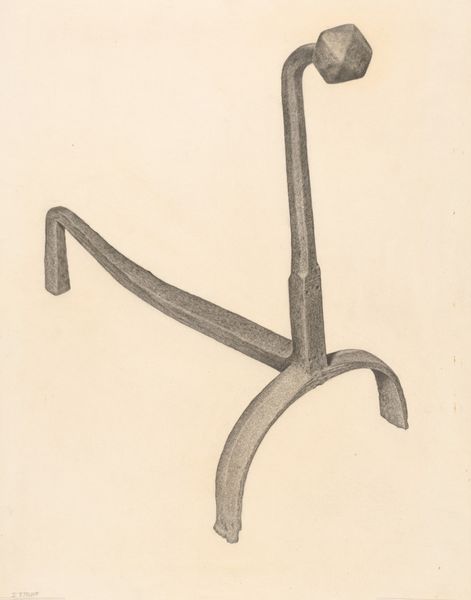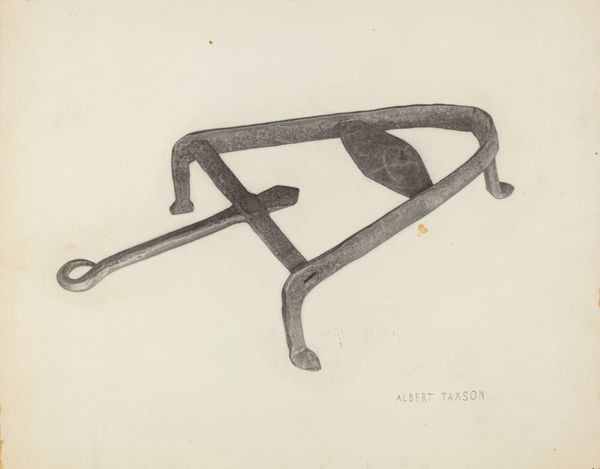
drawing, pencil
#
pencil drawn
#
drawing
#
aged paper
#
toned paper
#
light pencil work
#
pencil sketch
#
old engraving style
#
personal sketchbook
#
geometric
#
pencil
#
ink colored
#
line
#
sketchbook drawing
#
sketchbook art
Dimensions: overall: 29 x 22.9 cm (11 7/16 x 9 in.) Original IAD Object: 5" long; 5" wide; 1 1/2" high
Copyright: National Gallery of Art: CC0 1.0
Curator: This is a drawing entitled "Trivet," created by Charles Garjian around 1938. It's rendered in pencil on what appears to be aged, toned paper. Editor: It has such a sparse, almost utilitarian feel, doesn't it? The lines are simple, clean, but also kind of somber given the aged paper. Curator: Precisely. Garjian's piece reflects a very specific period of American art. There was this desire to capture the dignity and purpose of even the most ordinary objects during an era marked by economic hardship. Editor: So, elevating the mundane almost becomes an act of resilience, right? I'm also struck by how he's chosen to represent the trivet in stages. Like an exploded diagram—presenting its various parts from different perspectives on a single plane. Curator: Yes, it suggests the intersection of functionality and the design ethic of the time. You know, mass production and the machine aesthetic impacted artistic renderings of everyday objects. Editor: It is interesting. The stark simplicity emphasizes a pre-digital understanding of practical design. Thinking about our relationship to manufactured things, it's harder now to see this level of... quiet consideration, you know? Curator: The trivet, traditionally, protects surfaces from heat, bearing the brunt of use and labor. The artist presents a study in form. In essence, this trivet design, even on paper, exists because we as a society deem labor worth doing, sustaining the practice of eating or gathering around shared warmth and care. Editor: Definitely a point well taken. It reframes what looks like just a functional sketch into something so much larger. It’s a visual meditation on use, labor, and societal sustenance all wrapped into this understated design. A compelling thing, the political weight held within ordinary object drawings like this. Curator: Agreed. This glimpse into everyday life can invite questions of how art reflects both the spirit and function of its society. Editor: I leave here thinking about the beauty of everyday life, even in its simplicity. Curator: And perhaps, finding value and durability within functional things can serve as its own subtle and satisfying declaration.
Comments
No comments
Be the first to comment and join the conversation on the ultimate creative platform.
